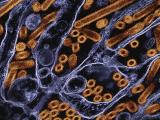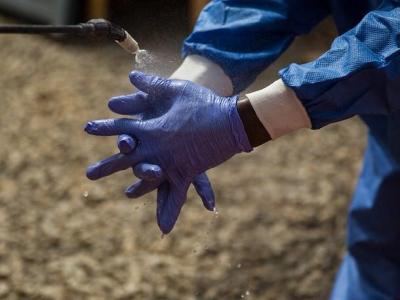Dec 3, 2012
Draft criteria for US funding of H5N1 research spark debate
A set of proposed criteria for US government funding of experiments that could produce potentially more-dangerous H5N1 avian influenza viruses is sparking debate among researchers, according to a Nov 30 ScienceInsider report. The key requirement for funding such "gain-of-function" research is that it must not be designed or expected to yield a virus with increased transmissibility, pathogenicity, or host range unless there is evidence that natural evolution could produce a similar virus in "the foreseeable future." Amy Patterson, MD, associate director for science policy at the National Institutes of Health (NIH), said this criterion was "very controversial" in the government committee that produced the list, the story said. The criteria also say the study must address a topic of high public health significance and that other, safer ways to address the same scientific question are unavailable. The list was unveiled last week at a meeting of the National Science Advisory Board for Biosecurity (NSABB), which advises the government on biological research that could be used for good or ill. Some flu researchers said the plan would block funding for many potentially useful studies, while others called it a sign of progress in government efforts to reduce the risks of H5N1 research, according to the story. The draft criteria largely stem from a controversy that began late in 2011 with the news of two studies in which scientists manipulated H5N1 viruses in ways that increased their transmissibility in ferrets. The NIH will soon publish a white paper describing the criteria in detail.
Nov 30 ScienceInsider story
Nov 27 NIH slide presentation on the criteria
Jun 21 CIDRAP News story on H5N1 gain-of-function study
Steroid-linked fungal infections climb to 541
The number of fungal infections linked contaminated steroid injections has risen to 541, an increase of 31 since Nov 16, according to an update today from the US Centers for Disease Control and Prevention (CDC). The number of deaths remained the same, at 36. The outbreak includes 363 cases of meningitis with or without other infections, 8 strokes without lumbar puncture, 153 cases that involve only paraspinal or spinal infections, and 17 peripheral joint infections. The infections are linked to three recalled batches of methylprednisolone acetate injections made by New England Compounding Center, based in Framingham, Mass. The outbreak, which has sickened patients in 19 states, has led to more intensive scrutiny of large pharmacy compounders and has spurred Congressional inquires on gaps in oversight by the US Food and Drug Administration (FDA) and state regulators.
Dec 3 CDC fungal meningitis update
CDC says peanut butter Salmonella outbreak is over
A multistate Salmonella Bredeney outbreak linked to peanut butter produced by Sunland, Inc., appears to be over, according to a Nov 30 CDC statement. The CDC said 42 patients from 20 states were sickened in the outbreak, an increase of 1 from its previous update on Nov 8. The latest illness onset was Sep 21. The CDC said that although the outbreak appears to be over, many of the recalled products have a long shelf life and may still be in people's homes. FDA inspectors found Salmonella in product samples and in swabs taken during environmental sampling at Sunland's plant. On Nov 26 the agency barred operations at its Portales, N.M., plant until the company makes recommended repairs and corrective actions.
Nov 30 CDC final outbreak update
New uses for food irradiation
Two FDA regulatory changes now allow radiation to be used for unrefrigerated raw meat and to be used in a higher dose than before (4.5 kGy vs 3.0 kGy) in poultry, according to a Food Safety News (FSN) story today. Previously, irradiation could be used only for refrigerated or frozen meats, but the FDA cited research showing it poses no health risk in higher-temperature meats, according to FSN. As for the higher-dose irradiation now allowed in poultry, it has been in use at the higher level for other meats and for molluscan shellfish before, where it has been deemed safe. The regulatory changes, which went into effect November 30, came in response to petitions filed by the Food Safety and Inspection Service (FSIS), part of the US Department of Agriculture, in 1999. Comments received during FDA's evaluation period from consumer advocacy groups requesting denial of the petitions did not sway the agency, the story said. Even though the FSIS oversees meat safety, irradiation of foods comes under the jurisdiction of the FDA because it is considered an additive.
Dec 3 FSN story
FDA regulation on irradiation of unrefrigerated raw meat
FDA regulation on higher-dose irradiation of poultry

















